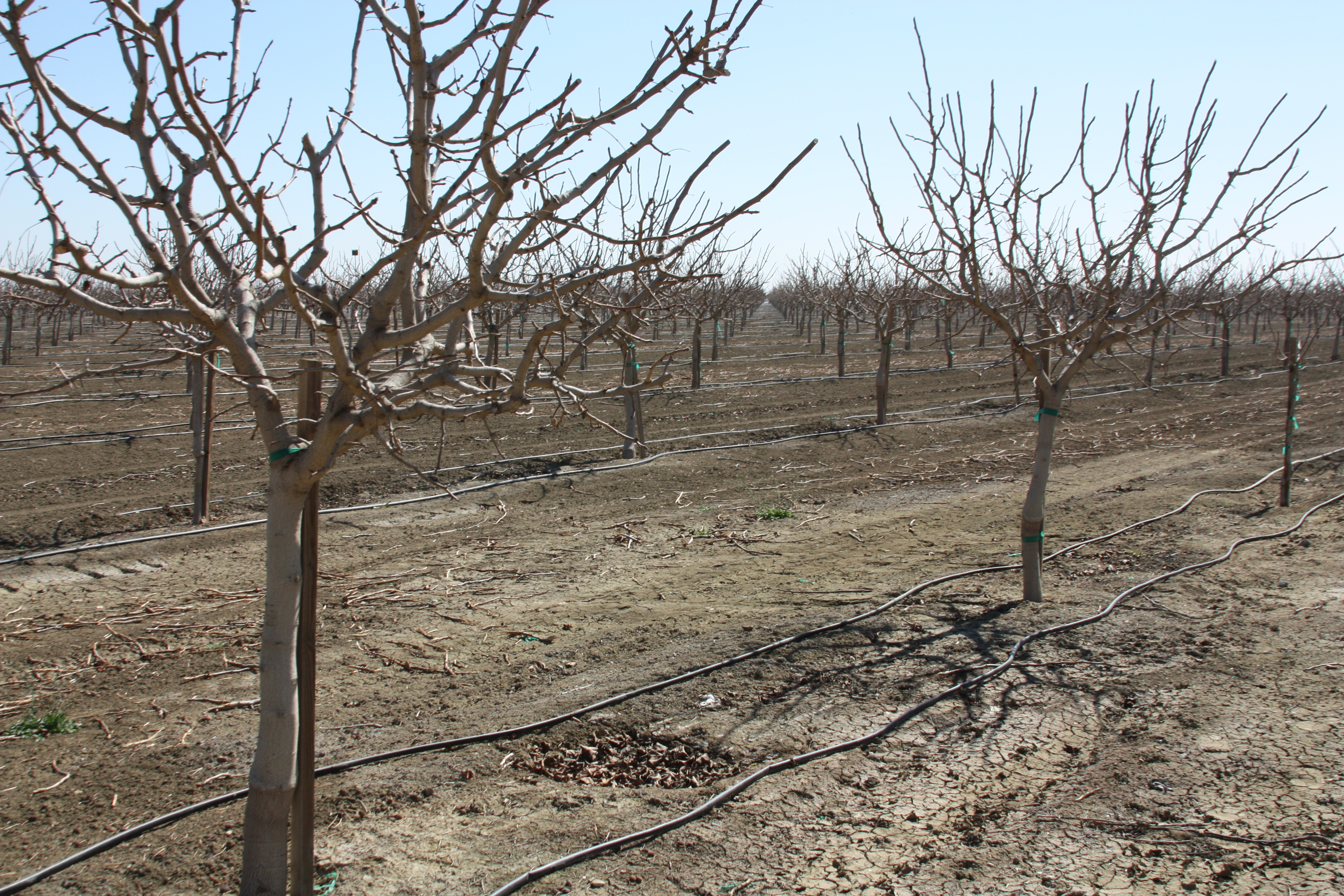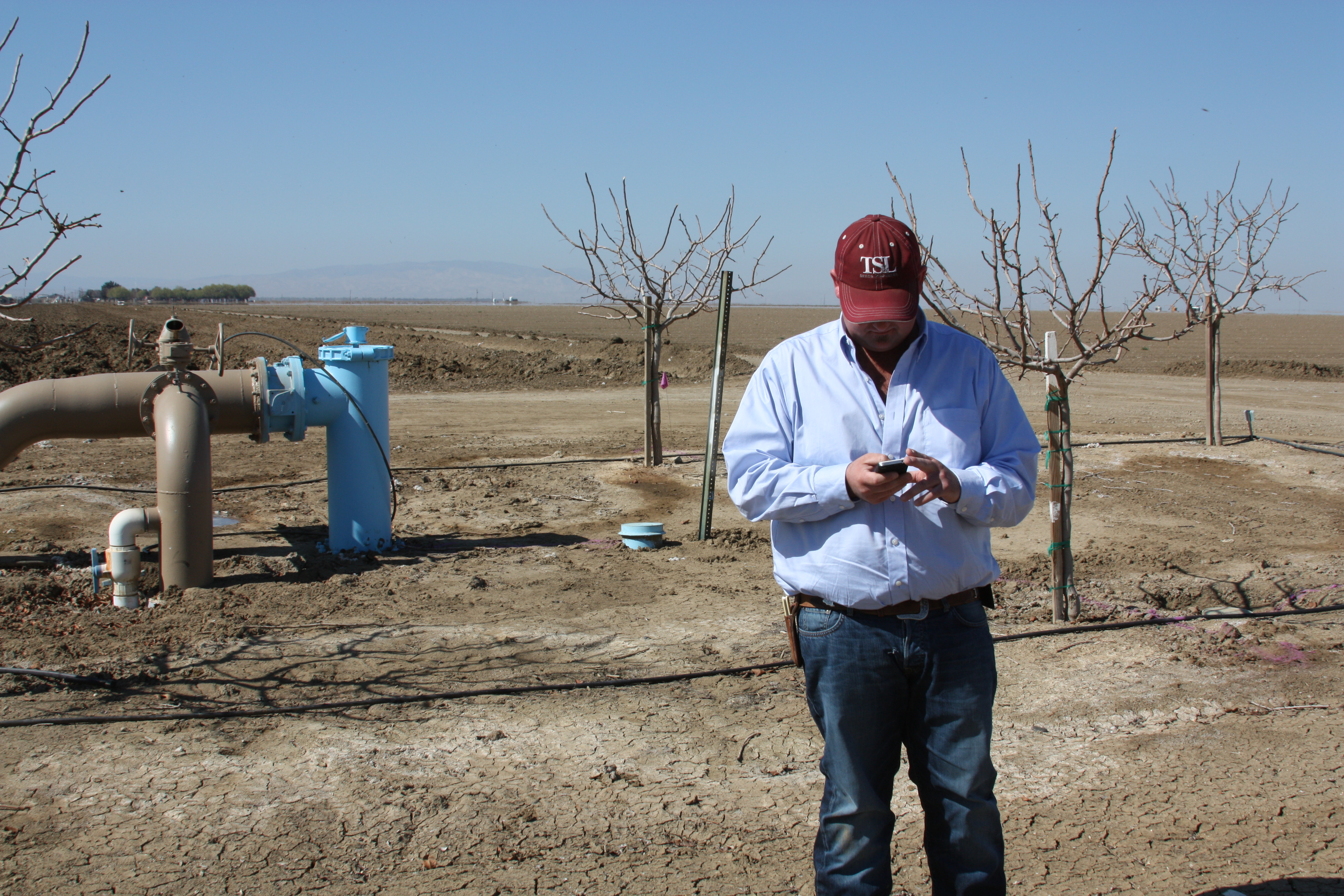Farmers, used to water shortages, prepare for bad news

UPDATE: Despite snow closing Interstate 5 over the Grapevine Pass on Monday, state snow surveyors returned from the Sierra today with more forlorn figures. The third snowpack measurement of the season showed water content in the accumulated snow at just 30% of the average for this date and 26% of the average for April 1, typically when the snowpack reaches its peak for the season.
Even though more snow is on the way, as I explain in my radio story for The California Report, Central Valley farmers are getting ready to face a fourth dry year in the last five.
I visited with Fresno County farmer Ryan Ferguson in his pistachio orchard near the Lemoore Naval Air station, to ask him how he’s coping with the news that he may get just 30% of the water he’s asking for from the canals of the federal Central Valley Project.
Despite the carry-over in the state’s reservoirs from last year’s healthy snowpack, this year is looking bleak, and water managers have to plan conservatively. That particularly impacts farmers like Ferguson, who’s land is part of the Westlands Water District, which relies entirely on federal Bureau of Reclamation for surface water.
Even though they are politically powerful, and control some of the nation’s wealthiest farms, Westlands growers are low on the totem pole when it comes to water rights. That, coupled with pumping restrictions to protect endangered fish in the Delta, means they’re unlikely to get their full allocation of federal water. In 2009, Westlands farmers got ten percent and fallowed thousands of acres. With last year’s bountiful snowpack, they got 80%.
The capricious weather means farmers like Ferguson can get whipsawed back and forth. “It makes it really difficult to plan,” he told me.

“You can’t gear up to farm 100% of your ranch one year, and 50% the next year. It makes it difficult to plan how much equipment to buy, even to decide whether we can put in more drip irrigation.”
Ferguson is part of a generation of young farmers that’s getting its start during some intensive years of drought. He’s invested in water-saving technology, including drip irrigation he can monitor from his iPhone.
One thing Ferguson’s likely to do this year: pump groundwater with his new million-dollar well. That well water comes at a far steeper price than what he buys from the feds, because he’s got to pay for electricity to power the well and bring the water to the surface. The groundwater here is salty and has to be cleaned up before it can be used on crops, which also requires expensive filtration.
But the biggest uncertainty is how much groundwater is left in the aquifer under these farms, or how quickly it could get sucked dry, especially if lots of farmers turn on their wells this summer.
One thought on “After a Dry February (sigh), Drought Looms on Central Valley Farms”
Comments are closed.

Westlands Ag interests knew full well when they signed contracts with Reclamation that it would be a very rare year in which they would get 100% of their so-called allocation. That is a maximum amount and the contracts make it clear that deliveries will frequently be less due to hydrological conditions (low precipitation) or legal considerations (for example, releases needed for a healthy fishery — commercial fishermen need work also you know). So, when Ag folks plant crops like trees that need water year in and year out they are taking a gamble that they darn well knew was a gamble.
Eventually more folks will come to the realization that a big step towards solving California’s water problem will require retirement of some of the toxic, selenium (and other chemicals) tainted lands, most of which are in the Westlands area. Retirement of about 1 million acres (out of a total of about 25 million devoted to Ag in California) would result in there being freed up enough water to adequately take care of Delta needs and have left over for the growing population in urban Southern Californa. The owners of the land that should be retired would be paid fair market value for their land, and the cost to do that would be far less that the $15 billion or more that it estimated for the unneeded Peripheral Canal.